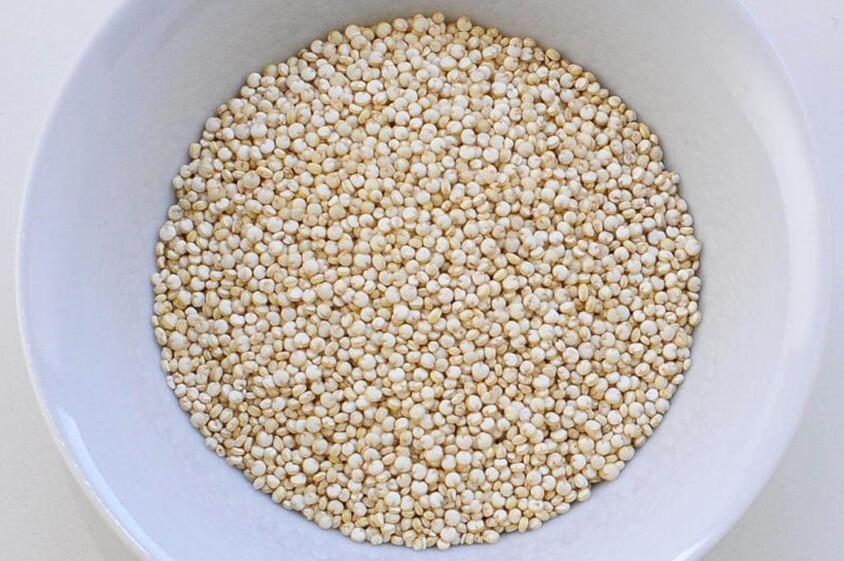
Between2012 and 2017, exports of Peruvian quinoa, the "golden grain of theIncas", have quadrupled in value from US$34.5 million to more than US$124million (S$163 million). PHOTO: DIOS VINCOY JR FOR THE STRAITS TIMES
LIMA (AFP) - From atop the Andesmountains to the depths of the Amazon rainforest and frigid Patagonia,indigenous people have long eaten quinoa, camu camu and calafate, a healthy dietthat has become a global phenomenon now threatened by overproduction.
Rich in antioxidants, vitamins, aminoacids, minerals and fibre, the grains of the high plains (quinoa, amaranth,kaniwa), roots (cassava and yacon) and berries (calafate, Chilean guava) offernew hope to prevent cardiovascular disease, obesity and cancer.
Consumed for thousands of years byindigenous people, these superfoods have only recently been widely popularised and madeaccessible to international markets.
Between 2011 and 2015, these ancientnatural products saw their prices jump 202 per cent, according to Promperu,Peru's export and tourism commission.
There was a 10 per cent increase fromJanuary to November 2017 in the exports of these foods, such as the sacha inchinut rich in fatty acids and the high-vitamin lucuma fruit, Promperu said.
The growing consumption of these healthfoods praised by foodies, vegetarians and dietitians has led producers to tryto align their annual yields with demand.
Between 2012 and 2017, exports ofPeruvian quinoa, the "golden grain of the Incas", have quadrupled invalue from US$34.5 million to more than US$124 million (S$163 million), datafrom Promperu showed.
Sacha indi exports increased 116 percent last year.
DETRIMENTAL PROCESSING
But the soil composition and theprocessing the superfoods undergo to be sold commercially and exported canalter or destroy their unique properties, warned chemist Marcela Zamorano, whospecialises in food analysis, at the University of Santiago, Chile.
Quinoa is often processed using hightemperatures.
"The main challenge is to make surethe nutrients of an industrialised product don't decrease compared to theoriginal grains," said Finnish food chemist Ritva Repo of La Molinaagrarian university in Lima, who has written several books about quinoa.
Originally from the Andean Plateau ofBolivia and Peru, quinoa is now also grown in China, India, the Netherlands andthe United States, among others.
Taken out of its natural habitat, thisAndean grain loses some of its nutrients, according to Repo.

Malaysian PM Najib clarifies he eats rice too, not just pricey quinoa
"The quinoa that grows at 4,000m isthe most nutritious," said Promperu director Isabella Falco, who ispushing for labelling the grain by origin so the consumer can identify Peruvianproducts.
Amaranth, which is richer in calcium andprotein than quinoa, and kaniwa, which contains more fibre and iron thanamaranth, could eventually join other ancient Andean grains in meeting the samefate as quinoa.
Experts say these grains, fruit andberries can help prevent or slow the progress of non communicable chronicdiseases such as diabetes.
DISEASE PREVENTION
But they cannot replace medicine if youare sick, stressed Ms Zamorano.
"Usually, superfoods don't fight aparticular pathogen, but they prevent the development of certaindiseases," she told AFP.
An industry has now been built aroundcakes, jellies and energising drinks using ingredients like maca (a rootvegetable nicknamed the Incan Viagra), camu camu (an Amazonian fruit thatcontains as much vitamin C as 60 oranges) or the ultra-nourishing coca leaf.
At the University of Chile, researchersare examining the anti-obesity properties of the calafate berry, which grows insouthern Chile and Argentina.
"Our idea is that this could serveto supplement a weight loss diet," said Mr Diego Garcia, who is headingthe project.
Mr Garcia is also studying theanti-inflammatory properties of Chilean guava, wild strawberries and themidnight blue-hued maqui, or Chilean wineberry, used to tint wine and thatboasts anti-oxidant properties.
In La Paz, Lima and Santiago, thesesuperfoods are given the place of honour in a growing number of restaurants,some of which have obtained top gastronomical rankings, such as Santiago'sBorago, Amaz in Lima and Gustu in Bolivia's capital.
Resource:


















